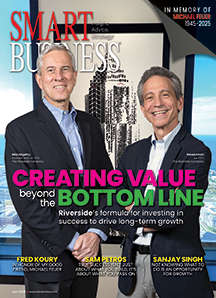 John Higgins needed to write a new history for Ligand Pharmaceuticals Inc. Which he did — in pudding. Well, sort of.
John Higgins needed to write a new history for Ligand Pharmaceuticals Inc. Which he did — in pudding. Well, sort of.
But first things first.
When Higgins came on board as the president and CEO nearly four years ago, he took over a pharmaceutical research company with nearly 20 years of experience in drug development. The company’s leaders had branched out into partnerships with other pharmaceutical companies, and in the process of ramping up their research and development wing, they also expanded other portions of their infrastructure, such as marketing and manufacturing.
The trouble was that Ligand was getting too big. The company was starting to become detached from the research specialization that had made it successful in the first place.
“We had very good products,” Higgins says. “We were selling a couple of cancer products; we were selling a pain product. These are very good medical products, but they were failures from a commercial perspective. Never did we achieve our sales forecast. What we were guiding to Wall Street in terms of our revenue projections, we were missing all of those objectives.”
Over the years, Ligand had overbuilt itself. The company’s cost structure was outpacing revenue streams, and there was no real hope of getting the numbers to line up without some drastic changes.
“Despite doing $180 million a year at peak revenue, we were never cash flow positive,” Higgins says. “At some point in the mid-2000s, before I joined, investors realized that this company has good assets. It has a good research base and great partnerships, but the equity promise was going to be obliterated. It was either going to be heavily diluted through future financing, or worse yet, run itself into the ground. So investors became active in the company, telling management to fix the company.”
That was the environment Higgins faced from his first day on the job. He needed to refocus Ligand on its core heritage business of research and development, remove unnecessary drains on revenue, streamline the company’s processes and perform it all while attempting to salvage employee morale — a difficult task to accomplish as Ligand pruned off departments such as marketing and manufacturing, reducing the work force from 650 to 90.
What it all meant was that Higgins had to work fast.

